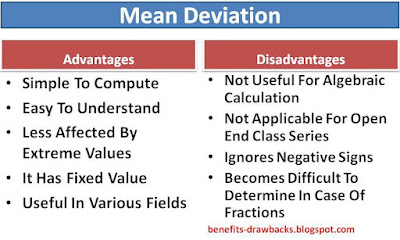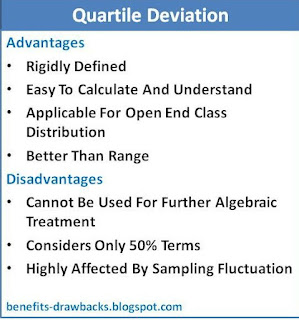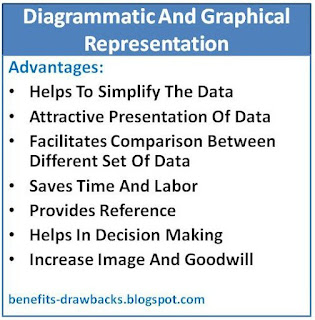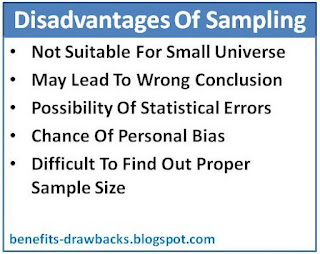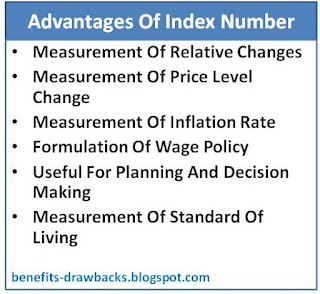Advantages Or Merits Of Standard Deviation
The main advantages of standard deviation can be expressed as follows:
1. Rigidly Defined
Standard deviation is rigidly defined measure and its value is always fixed.
2. Best Measure
Standard deviation is based on all the items in the series. So, it is the best measure of dispersion.
3. Less Affected
Standard deviation is least affected by the sampling fluctuations than other measures (mean deviation and quartile deviation).
4. Suitable For Algebraic Operation
Standard deviation can be used for mathematical operations and algebraic treatments. It is also applicable in statistical analysis.
Disadvantages Or Drawbacks Of Standard Deviation
Some of the major disadvantages of standard deviation can be expressed as follows:
Standard deviation is complex to compute and difficult to understand as compared to other measures of dispersion.
Also Read:
Also Read:
2. High Effect
Standard deviation is highly affected by the extreme values in the series.
Pros And Cons Of Standard Deviation In Short
Pros:
- It is well defined and well known measurement of dispersion
- It is useful for mathematical, algebraic and statistical treatments
- It is less affected by fluctuations
Cons:
- It is difficult to calculate and hard to understand
- It is affected by extreme items or values
- Not applicable for open end class frequency distribution



